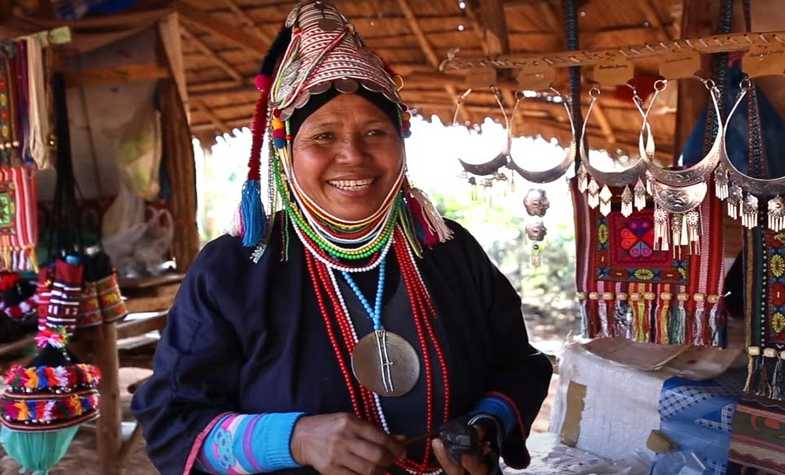Thai, more accurately Central Thai or Siamese, is the national and formal language of “the land of smile” and the mother tongue of the
Thai people, Thailand's major ethnic group. Belonged to the Tai group, a branch of the Tai-Kadai language system, some words in Thai are originated from Sanskrit, Pali, and Old Khmer. This tonal language also has a complex orthography and correspondent markers which is mutually intelligible with its neighbor country,
Laos.
Thai, the official language of
Thailand, is being used by more than 20 million people. Standard Thai is established on the popular use of the educational organizations of the capital city of Thailand. There are around 4 hundred thousand people speaking Khorat Thai which settled an important linguistic factor somewhere between Siamese Thai and Isan on a dialect aspect and perhaps considered a modification of either. Most people living on the Khorat Plateau bordered by the Mekong River (Northeastern region of Thailand) use the Laos language, which has affected the Siamese Thai dialect.
Besides Siamese Thai, there are some other relations of Tai languages which are available in Thailand, including:
• Isan (Northeastern Thai), a mixture of Thai-Lao language.
• Galung language, used in Nakhon Phanom Province in Northeast Thailand.
• Northern Thai, spoken by people living in an Indianized state center Lanna (Chiang Mai).
• Nyaw language, used popularly in some provinces situated in the Northeast regions of Thailand such as Sakhon Nakhon, Nakhon Phanom, and Udon Thani.
• Phuan, used by an undefined number of people living in central Thailand, Northern Laos, and Isan.
• Phu Thai, used by people living in Nakhon Phanom Province bordering Laos to the east.
• Shan (Tai Long, Thai Luang, Thai Yai), used by a number of people in the north-west region of Thailand along the boundary with the Shan States of Burma.
• Song, spoken by a small number of people in central and northern regions.
• Southern Thai (Pak Tai), used by nearly 5 million people.
• Thai Dam, spoken by large groups residing in Saraburi Province and Isan.
• Lü (Dai, Tai Lue), used by locals in northern Thailand.
Many of these languages are used by a great number of people living outside of the country. The major of native speakers and ethnic minorities use Central Thai due to the popularly used in most educational units all across the country.
On the other hand, several languages not in correspondence with Thai are used throughout the country. For example, residents living in the remote areas near Laos and Burma speak Karen, Hmong–Mien (Yao), Lisu, and so on. Located close to Cambodia, numerous groups speak Khmer while residing in Suphanburi province’s center, people use the Mon-Khmer language.

If the Thai language is the main language of Thailand, English is considered the second popular one due to the increasing number of foreign tourists and business visitors from around the world traveling to this beautiful country. That is the reason why most people living in the capital and famous tourist destinations where they welcome lots of foreigners every year can speak both Thai and English quite fluently.
In fact, visitors may find the challenge while learning the Thai language as it is not quite similar to other foreign languages. The Thai language comprises five specific tones: low, high, mid, rising, and falling, each of which affects the definition of individual “words”. Visitors who have not had any chance to interact with tonal languages often have trouble pronouncing even the easiest Thai basic terms. However, Thai people are always eager and friendly in helping foreign tourists learning and practicing their mother tongue.
Originated from the neighbor Khmers of Cambodia and become officially used during the Sukhothai period, the Thai alphabet comprises 44 consonants, 18 vowels, and 4 diphthongs (tonal) notations. Learning to read Thai is much more difficult than learning to speak it as the pronunciation of written words does not follow a simple progression of letters and the words do not have spaces between each other. Luckily, signboards along the roads are written in bilingual language including Thai and English. Additionally, most tourist places are well-equipped with introductions, menus, maps…in both Thai and other foreign languages.

